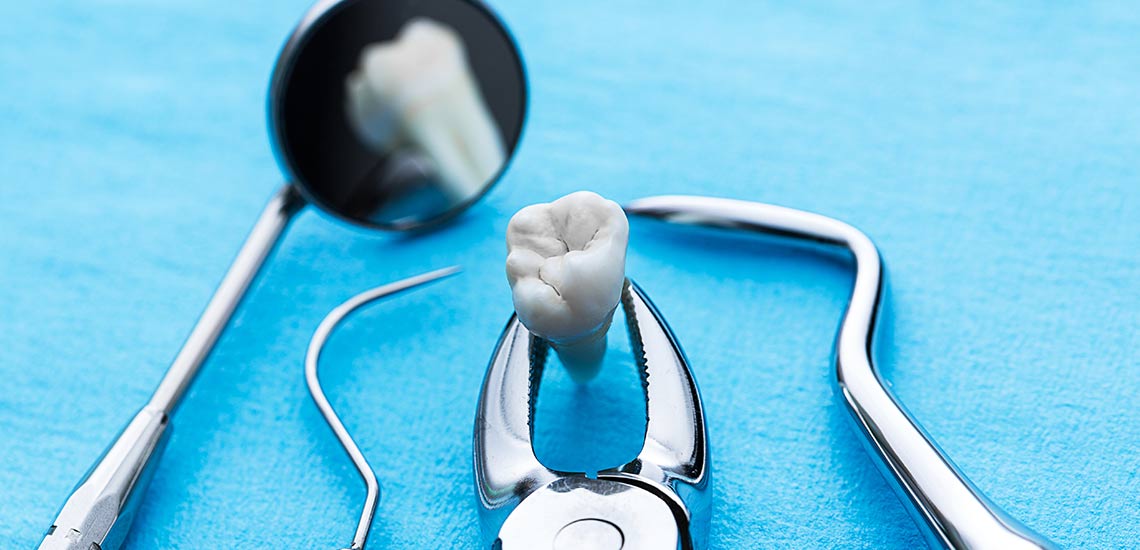A dental extraction (also referred to as tooth extraction, exodontia, exodontics, or informally, tooth pulling) is the removal of teeth from the dental alveolus (socket) in the alveolar bone. Extractions are performed for a wide variety of reasons, but most commonly to remove teeth which have become unrestorable through tooth decay, periodontal disease, or dental trauma, especially when they are associated with toothache. Sometimes wisdom teeth are impacted (stuck and unable to grow normally into the mouth) and may cause recurrent infections of the gum (pericoronitis). In orthodontics if the teeth are crowded, sound teeth may be extracted (often bicuspids) to create space so the rest of the teeth can be straightened. The decision to extract teeth for orthodontic reasons should only be made by an orthodontist, so the correct decision is made.
Dental Extraction Procedure
Extractions could be categorised into non-surgical (simple) and surgical, depending on the type of tooth to be removed and other factors. For the steps involved in these procedures, please see below.
A dental x-ray image (radiograph) showing the shape and number of roots of the molars which cannot be observed in the mouth directly.Assessment and special investigationsA comprehensive history taking should be performed to find out the pain history of the tooth, patient’s medical history and history of previous difficult extractions.The tooth should be assessed clinically i.e. checked visually by the dentist.Pre-extraction radiographs are not always necessary but are often taken to confirm the diagnosis and hence appropriate treatment plan.Radiographs also help in visualising the shape and size of roots which are beneficial in planning the extraction. All this information will aid the dentist in foreseeing any difficulties and hence prepare appropriately.
In order to obtain permission from our patient for extraction of tooth we will explain other treatment options available, what is involved in the dental extraction procedure, the potential risks of the procedure and the benefits of the procedure.
infiltration - injection containing local anaesthetic is delivered into the gum near the root tip of the tooth to be extracted. This allows the local anaesthetic to penetrate through the bone, eventually reaching the nerve bundle of the tooth to be extracted.
nerve block - injection containing local anaesthetic is delivered to an earlier branch of a nerve. For example, the inferior alveolar nerve block can be used to anaesthetise all the lower teeth.
Dental extraction forceps.
Removal of tooth
Extraction forceps are commonly used to remove teeth. Different shaped forceps are available depending on the type of tooth requiring removal, what side of the mouth (left or right) it is on and if it is an upper or lower tooth. The beaks of the forceps must grip onto the root of the tooth securely before pressure is applied along the long axis of the tooth towards the root.
Post-operative instructions
Post-operative instructions should be given to a patient after an extraction to prevent further bleeding of socket and infection. The advice listed below is usually given verbally and in written form;
avoid rinsing mouth for 24 hours to prevent dislodging the blood clot
avoid smoking for 24 hours to reduce risk of infection or development of a dry socket
avoid carrying out strenuous exercises
after 24 hours has passed use warm salty mouthwashes especially after meals to keep the wound clean


